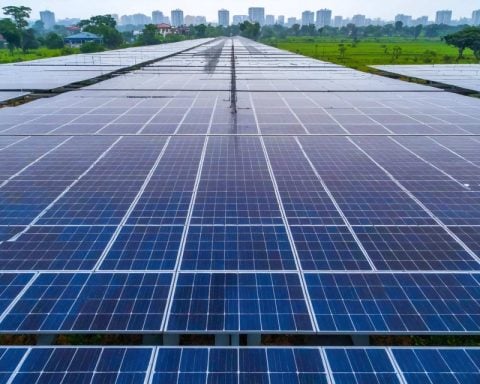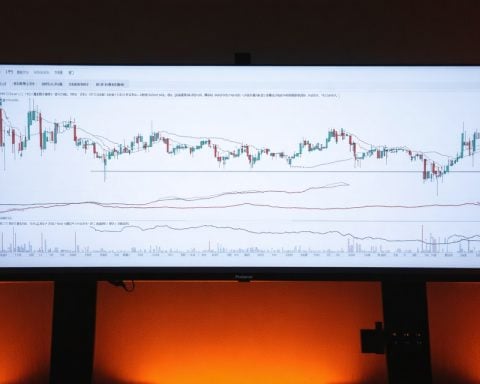The rise of electric vehicles (EVs) is creating unprecedented demand for essential battery materials, a challenge that is projected to heighten significantly by 2030. According to McKinsey’s latest findings, annual EV sales are set to soar from 4.5 million in 2023 to a staggering 28 million by the end of the decade, placing immense pressure on materials such as lithium, manganese, and graphite.
While lithium iron phosphate (LFP) batteries offer some advantages by reducing the need for limited resources like cobalt and nickel, they still rely heavily on lithium, manganese, and graphite. This dependence highlights the ongoing supply chain imbalances and the critical need for sustainable sourcing practices.
Moreover, approximately 40% of an EV battery’s carbon footprint stems from the mining and refining of these materials. McKinsey’s report stresses the importance of minimizing emissions in these stages. Implementing low-emission practices in raw material procurement could potentially decrease emissions in mining and refining by up to 80%.
Furthermore, the challenges are compounded for smaller yet vital materials like high-purity manganese. As the industry transitions towards LFP batteries, the emissions associated with manganese could see a significant increase without strategic interventions.
In response to these challenges, Toyota’s recent $4.5 million grant from the U.S. Department of Energy signifies an important step toward developing more sustainable battery options. The EV industry must collaborate to balance rising demand with sustainable practices to effectively meet climate goals and future production needs.
Battery Materials: The Key to Sustainable EV Growth by 2030
The acceleration of electric vehicle (EV) adoption is driving an unprecedented demand for essential battery materials, which presents both challenges and opportunities for the industry. A recent report by McKinsey highlights that global EV sales are projected to leap from 4.5 million in 2023 to an astonishing 28 million by the end of the decade. This surge is set to put immense pressure on the supply chains of critical materials such as lithium, manganese, and graphite.
Understanding Battery Material Dependencies
While lithium iron phosphate (LFP) batteries are increasingly being adopted due to their inherent benefits of reducing the reliance on limited resources such as cobalt and nickel, they still heavily depend on lithium, manganese, and graphite. This underscores a significant ongoing challenge: the imbalance in the supply chain for these essential materials.
To sustainably meet the surging demand, innovative sourcing practices must be established. Approximately 40% of an EV battery’s carbon footprint is attributed to the mining and refining processes of these materials. McKinsey emphasizes the urgency of adopting low-emission strategies during raw material procurement, indicating that such practices could reduce emissions in these stages by up to 80%.
Highlights on the Need for Strategic Intervention
The challenges extend beyond the more well-known battery materials, particularly affecting smaller but crucial resources like high-purity manganese. As the industry shifts towards LFP batteries, the associated emissions from manganese processing could significantly rise unless strategic measures are adopted to improve sustainability.
Innovations on the Horizon
In a bid to tackle these issues, companies like Toyota are investing in sustainable practices. Recently, the company received a $4.5 million grant from the U.S. Department of Energy, aimed at developing greener battery technologies. This investment points to a broader trend where major automotive players are committing resources to sustainable innovation.
Future Predictions: A Collaborative Approach
The path toward meeting EV production goals by 2030 will demand extensive collaboration within the industry. Brands must work together to align their supply chains with environmental sustainability goals while managing the rise in demand for battery materials. Implementing best practices for sustainable mining and material sourcing will be critical for minimizing the carbon footprint associated with EV batteries.
Pros and Cons of the Current EV Battery Landscape
Pros:
– Increased Adoption of EVs: Rising sales figures indicate a strong market demand for electric vehicles.
– Technological Advancements: Continuous innovations in battery technology, such as LFP alternatives, promise improved performance.
– Government Support: Initiatives like Toyota’s grant showcase governmental support for sustainable innovations.
Cons:
– Resource Scarcity: The heavy dependence on materials like lithium and manganese raises concerns regarding supply stability.
– Environmental Impact: The mining and refining process considerably contributes to the carbon footprint of EV batteries.
– Potential Price Increases: As demand rises, the cost of essential battery materials may escalate, affecting overall vehicle pricing.
Conclusion: The Road Ahead
The shift to electric vehicles is both a challenge and a significant opportunity for innovation in sustainable practices within the battery supply chain. Stakeholders across the automotive and technology sectors must collectively address the pressing issues of battery material sourcing to achieve climate targets and ensure a sustainable future. The investments and cooperative efforts undertaken today will lay the foundation for meeting the skyrocketing demand for electric vehicles by 2030.
For further information, please visit McKinsey.












